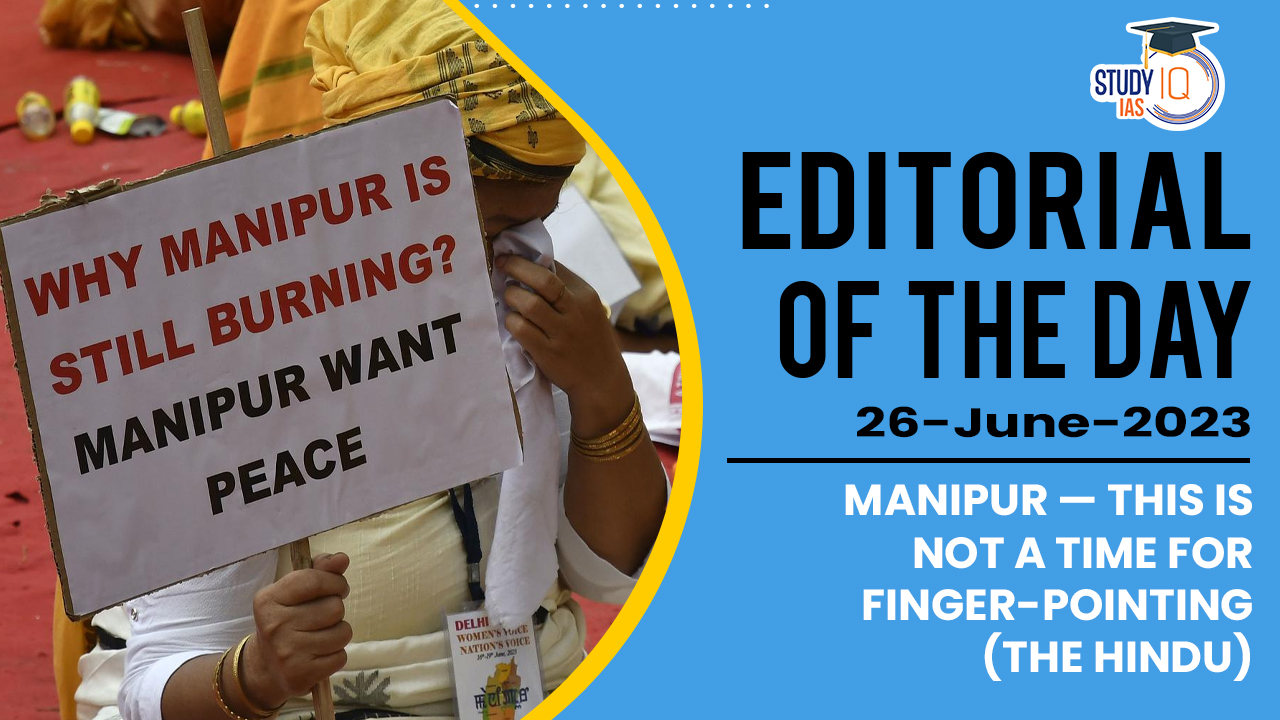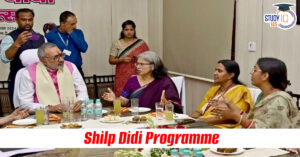Table of Contents
Context: The article is discussing the ongoing communal clash between two major communities in the Indian state of Manipur, namely the Kukis and Meiteis. It notes that the conflict has been unfolding for nearly two months, resulting in over 120 deaths and approximately 45,000 displaced individuals residing in temporary relief camps. The article stresses the importance of ceasing all forms of posturing and creating an environment where all stakeholders involved in the conflict, not just the Kukis and Meiteis, can come together and find a way forward. This includes reaching a consensus on structural administrative changes that are acceptable to all parties and beneficial for the entire community. Overall, the article emphasizes the need to prioritise restoring normalcy and putting an end to inter-community violence.
Background
The recent ethnic violence in Manipur:
- Recently, a violent ethnic clash erupted in Manipur, which has led to widespread violence, death and displacement.
- The clash involved the Meitei people, who are the majority residing in the Imphal Valley, and the tribal community from the surrounding hills, including the Kuki and Zo people.
- The conflict stemmed from the Meitei people’s demand for Scheduled Tribe status under the Indian Constitution, which would grant them privileges similar to those of the tribal communities.
- The situation escalated after a Manipur High Court verdict directed the state government to decide on the issue.
- The Indian Army deployed troops and imposed curfews to restore order, while investigations and peace committees were established to address the root causes of the violence.
Ethnicity of Manipur:
- The Meiteis are the largest community in Manipur.
- There are 34 recognized tribes, which are broadly classified as ‘Any Kuki Tribes’ and ‘Any Naga Tribes’.
- The central valley in the state accounts for about 10% of the landmass of Manipur, and is home primarily to the Meitei and Meitei Pangals who constitute roughly 64.6% of the state’s population.
- The remaining 90% of the state’s geographical area comprises hills surrounding the valley, which are home to the recognized tribes, making up about 35.4% of the state’s population.
Decoding the Editorial
The article is discussing the unrest in the state of Manipur and ways to resolve the same.
Link between Geography and Unrest:
- Global scenario:
- The article emphasizes the interdependence and mutual impact of communities, even if they live separately.
- It highlights that the geographical features, such as hills, valleys, rivers, and lakes, create a natural connection between communities, and any attempt to disrupt this interconnectedness can threaten the security of others.
- Here the works of Robert D. Kaplan and Halford J. Mackinder become relevant to support the notion that shared geographical destinies have often been implicit in some of the deadliest conflicts in the world.
- Other examples include Russia’s response to NATO’s actions in Ukraine and India’s response to the Chinese incursion in Bhutanese territory where geography played a role in shaping conflicts.
- Indian Context: Manipur
- In the context of Manipur, the hills and valley regions of the state depend on each other for their mutual welfare.
- The valley region, with its topographical and agricultural advantages, may have a historical sense of control over the surrounding hills where mountain passes and rivers originate.
- The concern of the Meiteis, one of the communities in Manipur, is explained in light of these geographical and historical factors.
- The Meiteis’ confinement to the small Imphal Valley today is a result of inheriting a skewed land law from the British colonial era.
- The British had to deal with different populations, including hunter-gatherers with limited community affiliations, and they found it convenient to associate with the centralised bureaucracies of the valley-based “Paddy States” in the region.
- The “Inner Line” and the Bengal Eastern Frontier Regulation of 1873 highlights a governance mechanism introduced by the British in the region.
- The intent was to establish control and separate the perceived “modern” from the “primitive” by drawing territorial boundaries along the foot of the hills surrounding the floodplains.
Displacement and Historical Grievance:
- The article acknowledges the pain and suffering experienced by the Meiteis, particularly in relation to their displacement from Manipur’s hills over the decades since India’s independence.
- It highlights that while the focus is often on the ethnic cleansing happening in Manipur at present, there is also a silent and seemingly non-aggressive ethnic cleansing of Meiteis from the hills that has been occurring for some time.
- The pain and humiliation endured by the Meiteis due to their confinement and displacement are significant, and their demand for Scheduled Tribe (ST) status is seen as a response to this sense of besiegement.
Meitei’s Response and Chronology of Events:
- The violent response of the Meiteis to the carnage on May 3 in the Torbung area of Churachandpur district, though not justifiable, can be understood in this context.
- Meitei villagers, facing arson attacks by Kuki mobs, sought help but felt abandoned by the government’s inaction.
- This led to a dark, primordial, and amoral energy within the Meitei society, driven by a subterranean sense of a civilizational and existential threat, both immediate and accumulated over time.
- The subsequent violence that ensued was described as unimaginably wild and indiscriminate, affecting various targets, including ambulances, schools, ministerial bungalows, and innocent men, women, and children.
- Two organizations, Arambai Tenggol and Meitei Leepun, are believed to be solely responsible for the violence.
- It highlights the alarming scale of community mobilization and the willingness to kill or die among ordinary men and women, expressing a sense of astonishment and fear.
Kuki Grievance:
The article acknowledges the suffering endured by the Kuki community in Manipur and highlights the grievances they have faced due to government policies such as drives against poppy plantation, illegal migration, and encroachment into reserved forests.
- It suggests that these unjust actions may have caused hurt and a sense of persecution among the Kukis, which could help explain why they reacted with extreme violence on May 3 during the rally organized to protest the proposal to include Meiteis in the Scheduled Tribe (ST) list.
- It contrasts this with the fact that the Nagas, who were also part of the same rally, did not respond with the same level of violence.
Way forward
- The article calls for the restoration of normalcy as the top priority, with a particular emphasis on leadership taking the initiative.
- It suggests that even if there are unresolved issues between the communities, they must put an end to the ongoing violence.
- The Assam Rifles, a paramilitary force deployed in the region,has to provide conclusive evidence that Kuki militants under the Suspension of Operation agreement are back in their designated camps, to dispel doubts about their involvement in the conflict.
- It further suggests that the return or recovery of weapons looted from police stations in the valley areas should be pursued.
In this context, the article references Mahatma Gandhi’s courageous decision to call off the Non-Cooperation Movement in 1922 after the violent Chauri Chaura incident, citing it as an example to emulate. It implies that just as Gandhi prioritized peace and called off the movement despite the incident, the current leadership should focus on restoring calm and resolving the conflict rather than prolonging violence.


 UNEP Champions of the Earth Award: UN's ...
UNEP Champions of the Earth Award: UN's ...
 Shilp Didi Programme: Empowering Women A...
Shilp Didi Programme: Empowering Women A...
 Is the Falling Rupee a Cause for Alarm?
Is the Falling Rupee a Cause for Alarm?

























